Investigation on the Process of Eliminating Abnormal Objects from the Road for the Creation of an AI Program That Can Automatically Detect Potholes †
Abstract
:1. Introduction
2. Algorithm to Classify Abnormal Object
2.1. AI Model Selection
2.2. Criteria for Classifying Abnormal Objects
2.3. Artificial Intelligence Learning Process
3. Results of Abnormal Object Classification Learning
4. Conclusions
- As a result of carrying out pothole-detection learning with 1,670 images determined to be potholes among 598,553 data transmitted from the pothole detection equipment, potholes among abnormal objects on the road were detected 100% of the time.
- Twenty-two types of abnormal objects detected on roads and spaces other than roads were classified into seven types. As a result of learning using 15,780 abnormal object image data, the accuracy of the seven types of abnormal objects learned was 91%.
- The accuracy of the anomaly object classification was improved through its learning about 30,000 additional data stored in the pothole management server. Furthermore, server filtering was implemented, using an artificial intelligence classification model, without requiring manual work in order to advance.
Author Contributions
Funding
Institutional Review Board Statement
Informed Consent Statement
Data Availability Statement
Conflicts of Interest
References
- Hong, S.P. A Study on the Improving Pothole with Snowfall in Winter. Master’s Thesis, The University of Seoul, Seoul, Republic of Korea, 2016. [Google Scholar]
- Dai, J.; He, K.; Sun, J. Instance-Aware Semantic Segmentation via Multi-Task Network Cascades. In Proceedings of the IEEE Conference on Computer Vision and Pattern Recognition (CVPR), Las Vegas, NV, USA, 27–30 June 2016; pp. 3150–3158. [Google Scholar]
- Kim, D.; Sim, K.; Lee, G. Object Detection by Combining Two Different CNN Algorithms and Robotic Grasping Control. J. Inst. Control Robot. Syst. 2019, 25, 811–817. [Google Scholar] [CrossRef]
- Ministry of Land, Infrastructure and Transport. Final-Report of the National Highway Pavement Management System 2019; Ministry of Land, Infrastructure and Transport: Sejong City, Republic of Korea, 2019. [Google Scholar]
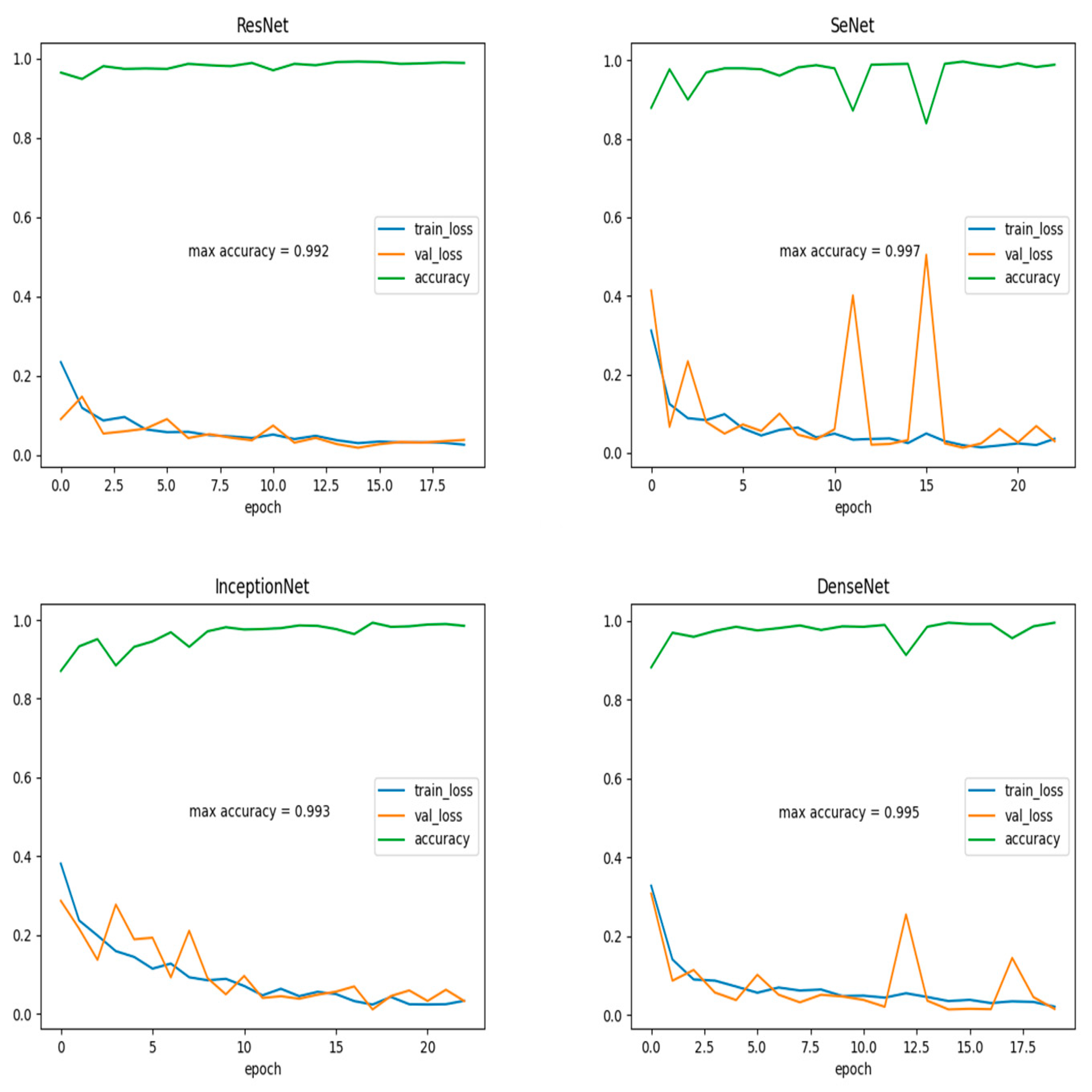
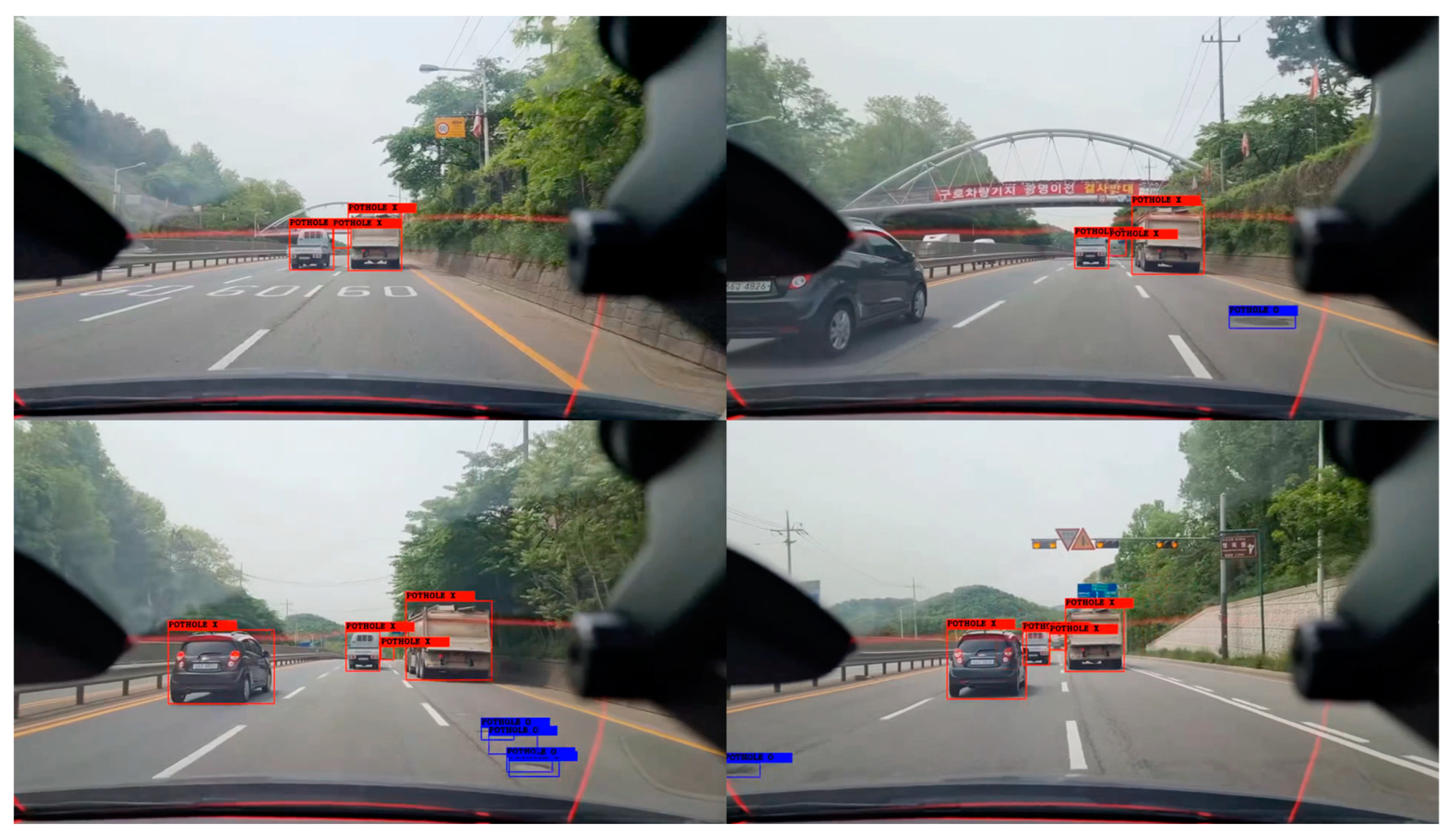
| No. | Classification of Learning Data | Learning Data Image | Number of Learning Data | Learning Rate (%) |
|---|---|---|---|---|
| 1 | Pothole | 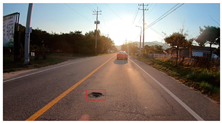 | 1670 | 10.6 |
| 2 | Manhole | 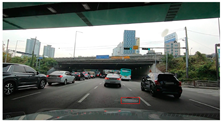 | 210 | 1.3 |
| 3 | Lane | 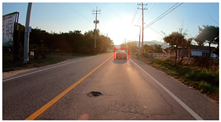 | 760 | 4.8 |
| 4 | Car | 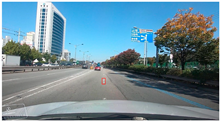 | 1450 | 9.2 |
| Trash | 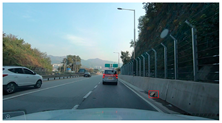 | 40 | 0.3 | |
| Shadow | 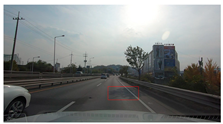 | 120 | 0.8 | |
| Etc. |  | 11,530 | 73 | |
| Total | 15,780 | 100 | ||
Disclaimer/Publisher’s Note: The statements, opinions and data contained in all publications are solely those of the individual author(s) and contributor(s) and not of MDPI and/or the editor(s). MDPI and/or the editor(s) disclaim responsibility for any injury to people or property resulting from any ideas, methods, instructions or products referred to in the content. |
© 2023 by the authors. Licensee MDPI, Basel, Switzerland. This article is an open access article distributed under the terms and conditions of the Creative Commons Attribution (CC BY) license (https://creativecommons.org/licenses/by/4.0/).
Share and Cite
Lee, M.; Lee, T.; Park, Y.; Han, S.; Lee, N.; Kim, C. Investigation on the Process of Eliminating Abnormal Objects from the Road for the Creation of an AI Program That Can Automatically Detect Potholes. Eng. Proc. 2023, 36, 66. https://doi.org/10.3390/engproc2023036066
Lee M, Lee T, Park Y, Han S, Lee N, Kim C. Investigation on the Process of Eliminating Abnormal Objects from the Road for the Creation of an AI Program That Can Automatically Detect Potholes. Engineering Proceedings. 2023; 36(1):66. https://doi.org/10.3390/engproc2023036066
Chicago/Turabian StyleLee, Moonsup, Taehoon Lee, Younghan Park, Seungyeon Han, Nuri Lee, and Chulki Kim. 2023. "Investigation on the Process of Eliminating Abnormal Objects from the Road for the Creation of an AI Program That Can Automatically Detect Potholes" Engineering Proceedings 36, no. 1: 66. https://doi.org/10.3390/engproc2023036066
APA StyleLee, M., Lee, T., Park, Y., Han, S., Lee, N., & Kim, C. (2023). Investigation on the Process of Eliminating Abnormal Objects from the Road for the Creation of an AI Program That Can Automatically Detect Potholes. Engineering Proceedings, 36(1), 66. https://doi.org/10.3390/engproc2023036066






